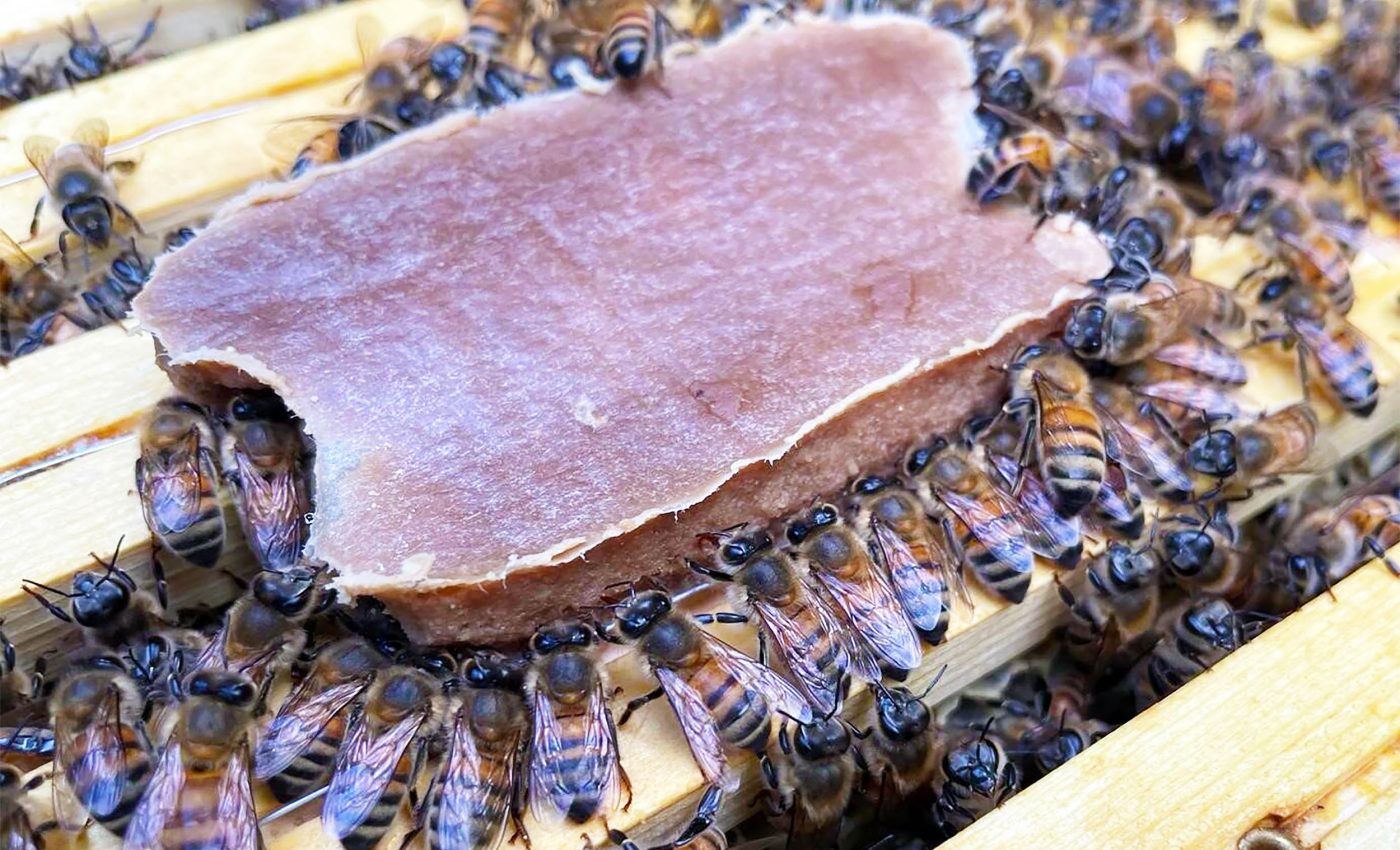
Scientists create pollen-replacing superfood for honey bees, hoping to prevent extinction
Honey bees are at the heart of global food systems. Their tireless pollination supports crops, ecosystems, and economies. Habitat loss, pesticide exposure, climate extremes, and poor nutrition have threatened their survival in recent decades.
Beekeepers worldwide have reported unsustainable losses, raising alarms about the stability of food production. To address this crisis, experts are working on solutions that go beyond traditional hive management.
Scientists have now introduced a remarkable food source that can sustain honey bee colonies indefinitely, even without natural pollen.
The research comes from Washington State University (WSU) and APIX Biosciences NV in Belgium. The trials showed that nutritionally stressed colonies thrived on this specially designed diet.
Food for bees on the brink
The innovation mirrors the artificial diets long used for livestock and pets. It provides honey bees with every essential nutrient, potentially offering a critical strategy against rising colony collapse.
This advancement will strengthen global food security, since bees serve as vital pollinators for agriculture.
The new food resembles human “power bars.” These nutrient-rich bars are placed inside hives, where young bees process and distribute them to larvae and adults.
This directly addresses the growing issue of poor nutrition that has long plagued honey bee survival.
Bees need better, healthier food
Changes in land use, urban expansion, and extreme weather all negatively impact nutrition for honey bees and other pollinators.
Study co-author Brandon Hopkin is a P.F. Thurber Endowed Distinguished Professor of pollinator ecology at WSU.
“Honey bees are generalists and do not get all their nutrition from a single source,” said Hopkin. “They need variety in their diet to survive but find it increasingly difficult to find the continuous supply of pollen they need to sustain the colony.”
Patrick Pilkington, CEO of APIX Biosciences US, emphasized the uniqueness of this breakthrough. “Until this study, honey bees were the only livestock that could not be maintained on a (human-made) feed,” he said.
Trials showed that colonies under nutritional stress fared much better on the new diet compared to current feeding practices.
Building a better bee diet
The project took over a decade of research and global collaboration. Thierry Bogaert is the study’s lead author and chairman of APIX Biosciences.
“The newly published work is the result of a Herculean scientific effort of three teams,” Bogaert enthused.
“First, the founders and scientists of APIX Biosciences who tested thousands of combinations of ingredients on honey bees over more than 10 years to create this feed,” Bogart continued.
“Second, the WSU team, with leading honey bee and field expertise. And third, leading beekeepers in California, together with extension teams, made large-scale, science-based field testing of feeds possible.”
A major finding during the research was the discovery of isofucosterol, a nutrient found naturally in pollen. This molecule proved critical for bee survival.
Missing piece in bee diets
The study revealed that not all sterols in pollen play the same role for bees. For decades, 24-methylenecholesterol was considered the most critical sterol, but experiments showed that colonies could survive without it, though with some decline in brood production.
In contrast, removing isofucosterol had severe effects, including reduced brood growth and neuromuscular dysfunction.
Isofucosterol depletion caused bees to move sluggishly and exhibit impaired coordination, reducing their ability to forage and care for brood. Colonies missing this nutrient collapsed, proving it to be an essential sterol.
The researchers suggest that the nutrient’s importance may stem from how it influences cell membranes and nerve functions.
Unlike other sterols, bees appear to conserve isofucosterol more carefully, suggesting an evolutionary mechanism to retain it for vital processes.
Trials show colonies rebound
To confirm real-world effectiveness, the WSU team tested the diet with colonies in blueberry and sunflower fields. These environments are known to have poor pollen quality and typically stress colonies.
The study showed that colonies receiving the complete diet maintained higher survival and growth, while those on commercial substitutes or no feed declined sharply.
Interestingly, colonies on the new diet also displayed feed efficiency similar to natural pollen. For every capped brood cell produced, the bees consumed almost the same diet mass they would have with pollen.
This finding highlights that the artificial feed can truly substitute pollen, not just supplement it.
“Some beekeepers don’t pollinate blueberries anymore because colonies suffer or die and the pollination fees don’t cover the losses,” Hopkins explained.
“Blueberry pollen isn’t very nutritious for honey bees, and they aren’t adapted well to pollinating that crop. But if they have this supplemental food source, beekeepers may return to pollinating those fields since they know their bees are more likely to survive.”
Saving bees, securing food
Annual colony losses remain alarmingly high, highlighting the urgency of this breakthrough. The study demonstrated that colonies given the complete diet remained strong from spring through autumn, even during periods of transport, high-density storage, and natural pollen scarcity.
These larger, healthier colonies are better prepared for overwintering, a key predictor of survival in temperate climates.
“We are confident that the product will positively impact beekeepers and growers once it’s available to purchase in the U.S., targeted for mid-2026,” Pilkington said.
“We are working with WSU and the beekeeping community across the U.S. to develop the best way to make use of this new tool in agricultural settings.”
By addressing nutritional gaps, this innovation could reshape pollination practices, reduce losses, and strengthen the food systems that depend on honey bees.
The study is published in the journal Proceedings of the Royal Society B: Biological Sciences.
—–
Like what you read? Subscribe to our newsletter for engaging articles, exclusive content, and the latest updates.
Check us out on EarthSnap, a free app brought to you by Eric Ralls and Earth.com.
—–













